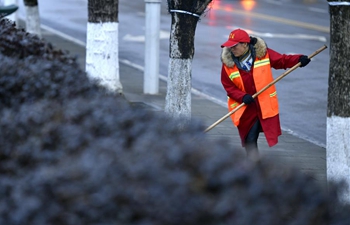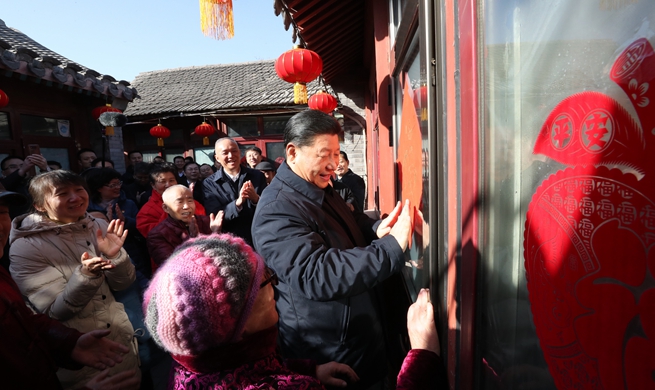GUANGZHOU, Feb. 4 (Xinhua) -- Migrant worker Liao Guiren was more than excited to take a bullet train on his Spring Festival journey back home, the first time for the middle-aged man.
Each year during the past two decades, the 45-year-old had to endure an exhausting eight-hour bus ride from his workplace in south China's Guangdong Province to his hometown in the city of Guigang in Guangxi Zhuang Autonomous Region, for a large annual family gathering.
But this year, the bullet train cut his travel time to less than three and a half hours.
"The traffic jams on the roads during the holiday must be worse," Liao said when having his ticket checked at the railway station in Guangdong's Zhongshan. "The expressways back home must be more crowded than the railway station."
Liao said it was no easy job to buy the bus ticket back home during the festival. "I used to line up for hours at the station for tickets, and the prices often ticked up due to high demand."
However, it took Liao a couple of minutes to buy the train ticket back home on his smartphone this year.
Liao is among a growing number of Chinese travelers who have benefited from a more convenient and efficient way to return home during the Spring Festival travel rush in recent years.
It is estimated that the annual travel rush that lasts 40 days will see 413 million railway trips across the country, up 8.3 percent from the previous year.
To meet the growing demand, China has been expanding its railway network at an unprecedented pace for decades, with the total operational length of high-speed railways reaching 29,000 km by the end of last year.
One of the country's major newly-built railways is the Guangzhou-Shenzhen-Hong Kong Express Rail Link, which started service last year and links Hong Kong with more than 40 cities on the Chinese mainland via direct rail services.
"The railway makes it more convenient for those working in Hong Kong to return to the mainland for family gatherings," said Siu Kin-Po, head of the Guangzhou center of the Hong Kong Federation of Trade Unions.
SMARTER TRAVEL
Liao has taken trains several times, but it was his first time to use a self-service machine to check in at the railway station.
Liao followed the instructions on the machine that explicitly explains what to do.
He put both his ticket and ID card onto the slot of the machine and waited for the facial recognition system to identify his face before the gate opened to let him pass. The whole process took less than 10 seconds.
A total of 595 self-service check-in machines have been deployed at the railway stations in Guangdong, Hunan and Hainan to streamline the check-in process, according to China Railway Guangzhou Group Co. Ltd.
Other smart technologies such as virtual reality and smart navigation machines have also been used in Chinese railway stations to help travelers ease the pressure during the travel rush.
"Smart technologies have made the rail services more fun and convenient," Liao said. "I want to take bullet train again next year when I go home."

















